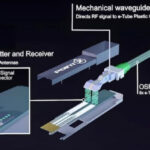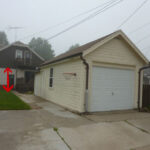1. Overview
Both ACSR and ACCC are overhead power conductors designed to transmit electricity efficiently over long distances.
While ACSR is the traditional and most commonly used type, ACCC represents a new generation of high-performance composite conductors designed for better efficiency and higher capacity.
| Feature | ACSR (Aluminum Conductor Steel Reinforced) | ACCC (Aluminum Conductor Composite Core) |
|---|---|---|
| Core Material | Galvanized steel | Carbon fiber and glass fiber composite |
| Outer Strands | Hard-drawn aluminum | Annealed (soft) trapezoidal aluminum |
| Typical Voltage Range | Low to extra-high voltage (≤ 800 kV) | Medium to ultra-high voltage (≤ 1000 kV) |
| Temperature Rating | Up to ~90°C | Up to ~200°C continuous |
| Thermal Expansion | High (steel expands with heat) | Very low (composite core resists sag) |
| Weight | Relatively heavy | 25–30% lighter |
| Tensile Strength | High | Higher (up to 2× steel’s strength-to-weight ratio) |
| Electrical Efficiency | Standard | Higher (reduces line losses by 25–40%) |
| Cost | Lower initial cost | Higher initial cost but lower lifetime cost |
| Applications | Traditional power transmission lines | Long-span, high-temperature, and capacity upgrade projects |
2. Structural Difference
ACSR:
Composed of steel core strands surrounded by hard-drawn aluminum. The steel provides mechanical strength, while aluminum conducts current.ACCC:
Uses a carbon-fiber/glass-fiber composite core surrounded by annealed trapezoidal aluminum strands. The composite core offers higher strength and lower thermal expansion, allowing for greater current-carrying capacity with minimal sag.
3. Performance Comparison
Sag and Thermal Expansion:
ACSR conductors expand and sag noticeably as temperature increases. ACCC’s composite core resists thermal expansion, maintaining tight clearance under high loads or temperatures.Current-Carrying Capacity:
ACCC can operate safely at higher temperatures (up to 200°C), allowing up to double the ampacity of ACSR in the same corridor.Efficiency:
ACCC conductors use fully annealed aluminum, which has lower resistance than the hard-drawn aluminum in ACSR — improving efficiency and reducing line losses.Durability:
ACCC offers superior corrosion resistance since its composite core does not rust like steel.
4. Applications
ACSR: Widely used for standard overhead transmission and distribution lines, especially where cost-effectiveness and reliability are key.
ACCC: Ideal for upgrading existing lines (without rebuilding towers), long-span crossings, and areas with high temperatures or strict clearance requirements.
5. Summary
| Aspect | ACSR | ACCC |
|---|---|---|
| Best For | Standard transmission projects | Efficiency upgrades & high-temperature environments |
| Advantages | Proven, economical, widely available | Higher capacity, lower sag, reduced line loss |
| Disadvantages | Sag at high temperatures, higher losses | Higher cost, special fittings required |
Conclusion
Both ACSR and ACCC play essential roles in modern power systems.
ACSR remains the industry workhorse — cost-effective, reliable, and easy to install.
ACCC, on the other hand, represents a technological advancement, enabling utilities to increase transmission capacity, improve efficiency, and reduce energy losses without major infrastructure upgrades.





